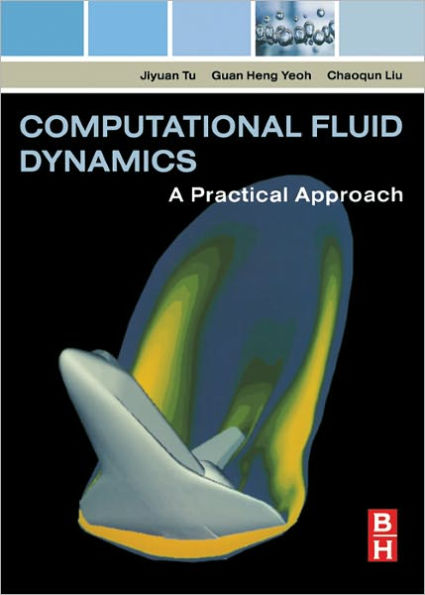Computational Fluid Dynamics: A Practical Approach
Computational Fluid Dynamics enables engineers to model and predict fluid flow in powerful, visually impressive ways and is one of the core engineering design tools, essential to the study and future work of many engineers. This textbook is designed to explcitly meet the needs engineering students taking a first course in CFD or computer-aided engineering. Fully course matched, with the most extensive and rigorous pedagogy and features of any book in the field, it is certain to be a key text.
"1116730647"
- The only course text available specifically designed to give an applications-lead, commercial software oriented approach to understanding and using Computational Fluid Dynamics (CFD).
- Meets the needs of all engineering disciplines that use CFD.
- The perfect CFD teaching resource: clear, straightforward text, step-by-step explanation of mathematical foundations, detailed worked examples, end-of-chapter knowledge check exercises, and homework assignment questions
Computational Fluid Dynamics: A Practical Approach
Computational Fluid Dynamics enables engineers to model and predict fluid flow in powerful, visually impressive ways and is one of the core engineering design tools, essential to the study and future work of many engineers. This textbook is designed to explcitly meet the needs engineering students taking a first course in CFD or computer-aided engineering. Fully course matched, with the most extensive and rigorous pedagogy and features of any book in the field, it is certain to be a key text.
- The only course text available specifically designed to give an applications-lead, commercial software oriented approach to understanding and using Computational Fluid Dynamics (CFD).
- Meets the needs of all engineering disciplines that use CFD.
- The perfect CFD teaching resource: clear, straightforward text, step-by-step explanation of mathematical foundations, detailed worked examples, end-of-chapter knowledge check exercises, and homework assignment questions
79.99
In Stock
5
1

Computational Fluid Dynamics: A Practical Approach
480
Computational Fluid Dynamics: A Practical Approach
480
79.99
In Stock

Product Details
| ISBN-13: | 9780080556857 |
|---|---|
| Publisher: | Elsevier Science |
| Publication date: | 12/04/2007 |
| Sold by: | Barnes & Noble |
| Format: | eBook |
| Pages: | 480 |
| File size: | 12 MB |
| Note: | This product may take a few minutes to download. |
About the Author
What People are Saying About This
From the B&N Reads Blog
